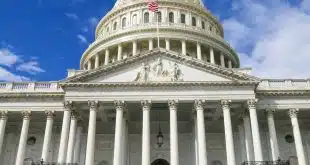Well, it finally happened. Apple Inc. has included a near-field communication chip in new iPhone 6 and charged full-bore into the troubled world of mobile wallets (see our cover story to read all about it).
To understand the significance of this event, you have to reflect on the history of NFC, on Apple’s non-flirtation with this technology, and on why linking Apple and NFC might make a difference. First, the history has been one of great promise, excitable proponents, multiple pilots—and, in the U.S. at least, zero commercialization for payments. Even NFC’s forerunner, contactless cards, couldn’t catch fire, and their chief U.S. proponent, Chase, quietly ditched them earlier this year.
Yet NFC hung on year after year, out there on the periphery of payments. It’s a powerful protocol, allowing for the transmission, in the blink of an eye, of payment and loyalty data from a mobile device to a merchant terminal. With a transmission range of only a few centimeters, it is truly a tap-and-go technology.
This is where Cupertino comes in. Year after year, NFC proponents expected Apple to include an NFC chip in the latest iteration of the fabled iPhone. With Apple’s marketing machine behind it, and with the millions of iPhone enthusiasts using it, NFC couldn’t fail to take off. But year after year, Apple disappointed. Even after rival Google put NFC in its Android phones, Apple kept its distance.
But 800 million iTunes accounts loaded with card credentials couldn’t be denied forever, and 2014 has turned out to be the year of the NFC-equipped iPhone. The new device will link to Apple Pay, a payment service launching this month with 11 issuers behind it accounting for better than 80% of U.S. credit card spending. And, of course, there’s that inimitable Apple design and marketing magic.
NFC isn’t home free. It’s still usable in only about 220,000 merchant locations that have contactless receivers hooked up and working. That’s a measly percentage of U.S. retail outlets. But the inevitability of the Europay-MasterCard-Visa (EMV) chip card, which has card-network deadlines behind it, means more and more merchants are installing EMV-capable terminals. Most of these are also NFC devices. The installations won’t happen overnight—the actual EMV liability shift is fully a year away—and many small merchants will lag, but within a few years the merchant base for NFC will have been built.
That no doubt played into Apple’s calculations. Now that it’s made its big bet on mobile payments—and on NFC—it will have to find ways to induce consumer usage. Given Apple’s track record, I wouldn’t bet against it.
John Stewart, Editor
john@digitaltransactions.net





